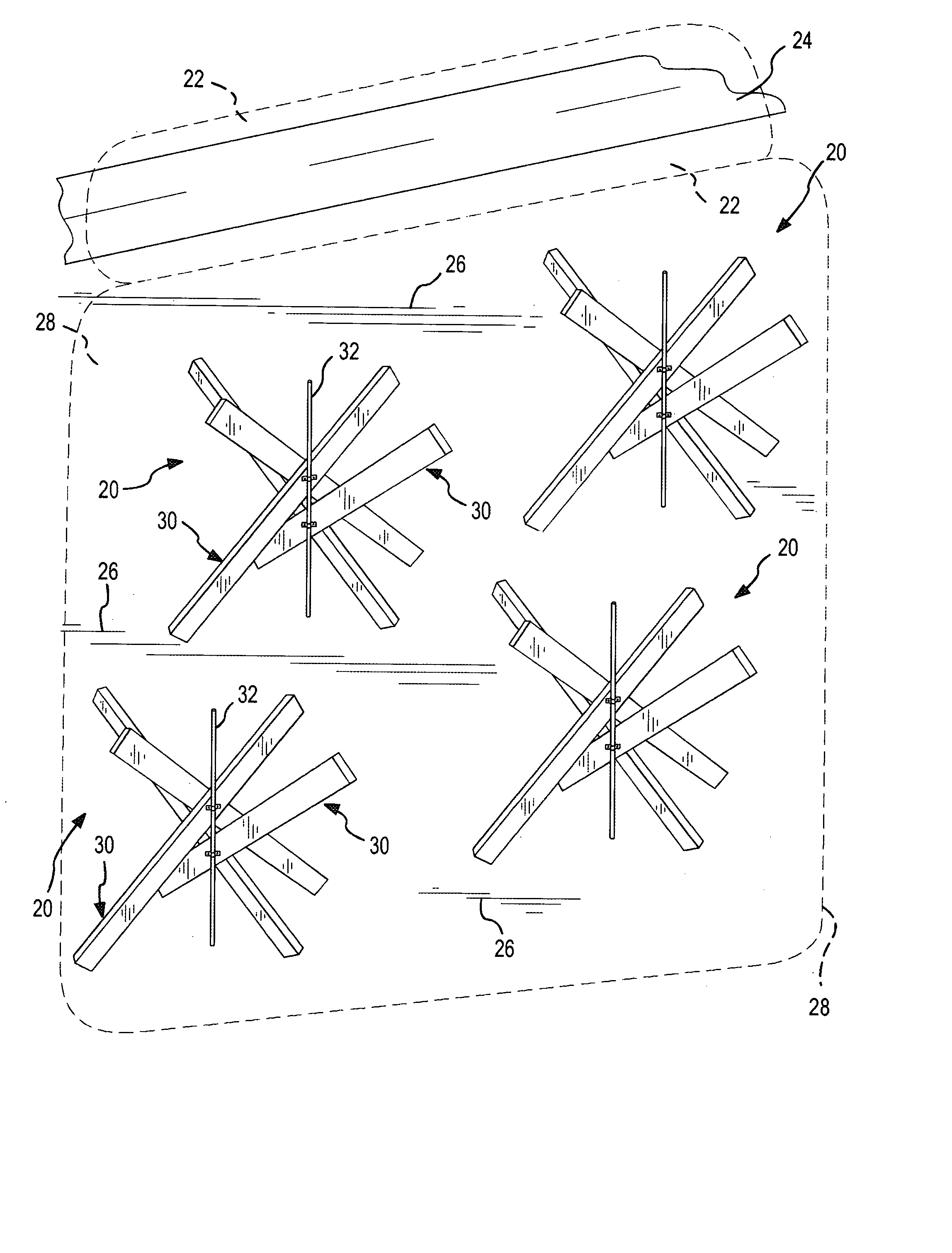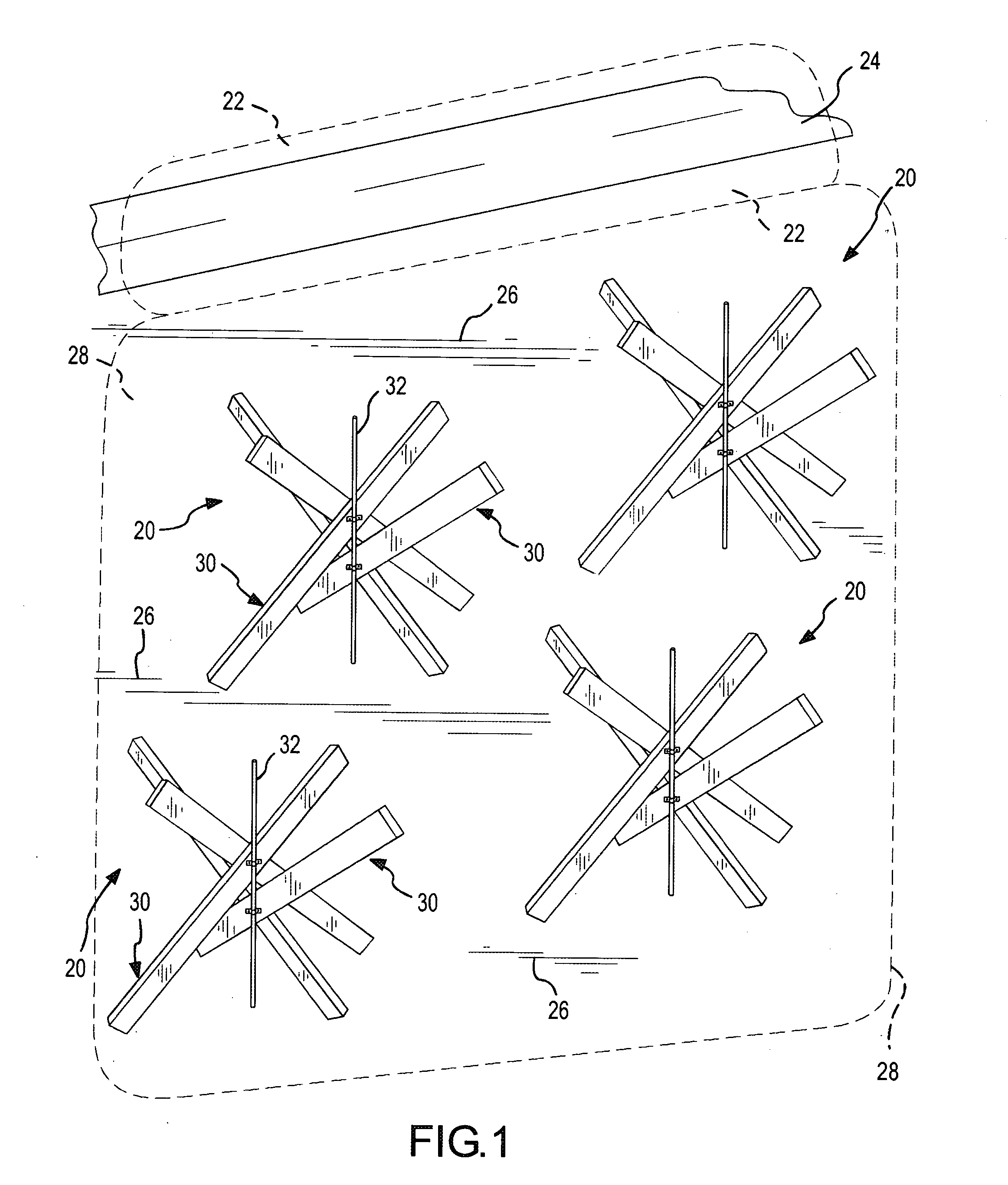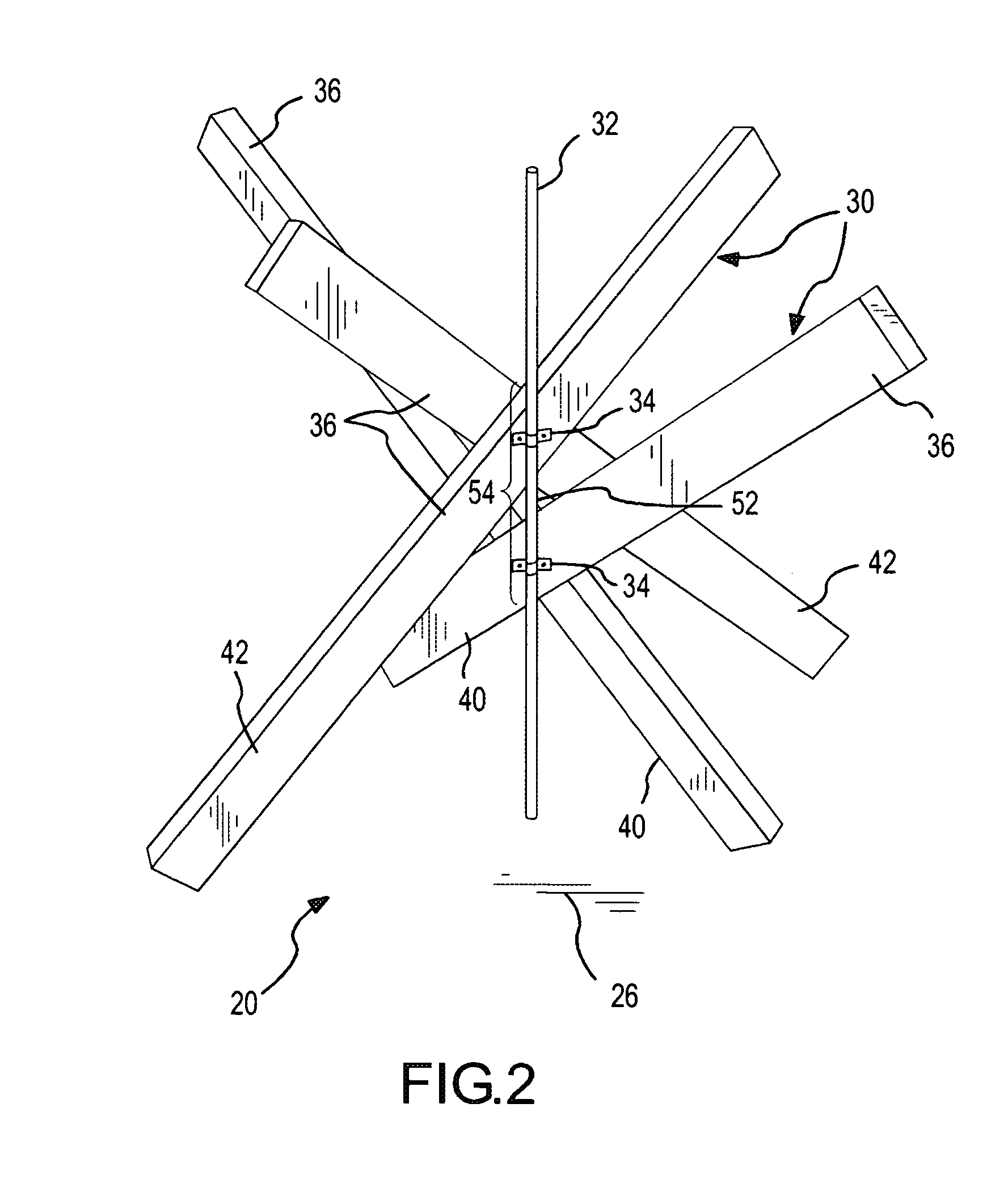Tetrapod control device and method for stabilizing, depositing and retaining windblown particles
a control device and control device technology, applied in excavations, piers, groynes, etc., can solve problems such as icy roads, reduced visibility, and hazardous driving conditions, and achieve the effects of easy repositioning, easy repositioning, and fast fabrication
- Summary
- Abstract
- Description
- Claims
- Application Information
AI Technical Summary
Benefits of technology
Problems solved by technology
Method used
Image
Examples
Embodiment Construction
[0029]The preferred form of a multi-pod windblown particle control device which incorporates the present invention is a tetrapod 20, shown in FIGS. 1–9. A plurality of tetrapods 20 are shown in FIG. 1 positioned adjacent to a critical area 22, such as a roadway 24, to prevent snow or other windblown particles from accumulating on and blowing over the roadway 24. The tetrapods 20 interact with the wind blowing horizontally over the tetrapods near the surface of the earth or ground 26, to reduce the wind velocity and to reduce the structure of the wind turbulence by breaking up large eddy currents into smaller ones. The reduced velocity and smaller-scale eddy currents cause the particles suspended in the wind to settle out of the wind and accumulate in a protected area 28 on the ground 26 which is downwind from but adjacent to the tetrapods 20. The reduced wind velocity and smaller-scale eddy currents within the protected area 28 also inhibit the wind from picking up and saltating the...
PUM
 Login to View More
Login to View More Abstract
Description
Claims
Application Information
 Login to View More
Login to View More - R&D
- Intellectual Property
- Life Sciences
- Materials
- Tech Scout
- Unparalleled Data Quality
- Higher Quality Content
- 60% Fewer Hallucinations
Browse by: Latest US Patents, China's latest patents, Technical Efficacy Thesaurus, Application Domain, Technology Topic, Popular Technical Reports.
© 2025 PatSnap. All rights reserved.Legal|Privacy policy|Modern Slavery Act Transparency Statement|Sitemap|About US| Contact US: help@patsnap.com



